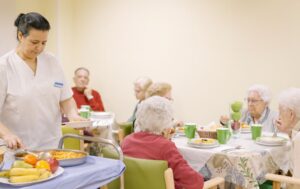
Nutrition Tips for People with Mobility Challenges
Maintaining a balanced diet is essential for overall health, but for individuals with mobility challenges,

Many challenges come with living with a disability, but with the right amount of self-care, it’s possible to live a relatively healthy life. This article will provide tips and solutions to help make life a little easier.
When it comes to disabled and aged people living at home, a few key challenges need to be considered.
For one, many elderly people find it difficult to live independently. They often need help with activities of daily living, such as maintaining health, taking good care of themselves, bathing, dressing, and grooming. Living at home can also be quite isolating for elderly people, leading to feelings of loneliness and isolation.
One of the best ways to maintain your health and well-being is to remain active, no matter what your disability may be.
Remember that you are not your disability. Embrace your abilities and focus on what you CAN do, not what you can’t.
This can be tough for some people, but having a support system is important. Reach out to friends, family, or community groups.
Even if it’s just a little bit each day, regular exercise will help improve your overall health and well-being.
Many helpful devices can make a living with a disability easier. Ask your doctor or healthcare provider for advice on which devices work best.
Dehydration is a common problem for people with disabilities, so drink plenty of fluids throughout the day.
Now that we’ve gone over some general self-care tips let’s talk about diet.
Regarding what to eat, there are no hard and fast rules. However, disabled and aged people generally require more calories and protein than the general population. This is because our bodies tend to be less efficient at using energy, and we need extra strength to perform activities of daily living. So make sure to include plenty of lean proteins, healthy fats, complex carbohydrates, fruits, vegetables, and calcium-rich foods.
If you’re living with a disability, making your home environment safe and accessible is crucial for your health and well-being.


There are many great ways to care for yourself when you’re living with a disability or as you get older! It can be tough, but you can make a difference with the right tools.

Maintaining a balanced diet is essential for overall health, but for individuals with mobility challenges,

Technology has become an essential part of daily life, but for many seniors, adapting to digital tools can feel overwhelming.

Advocating for your rights as a person living with disabilities is essential to ensuring that you receive the support,

As we age, our bodies require specific nutrients to maintain energy, immunity, and overall well-being.
Copyright © 2018 - 2023, TAUS Care. All Rights Reserved. Designed by RepuNEXT.